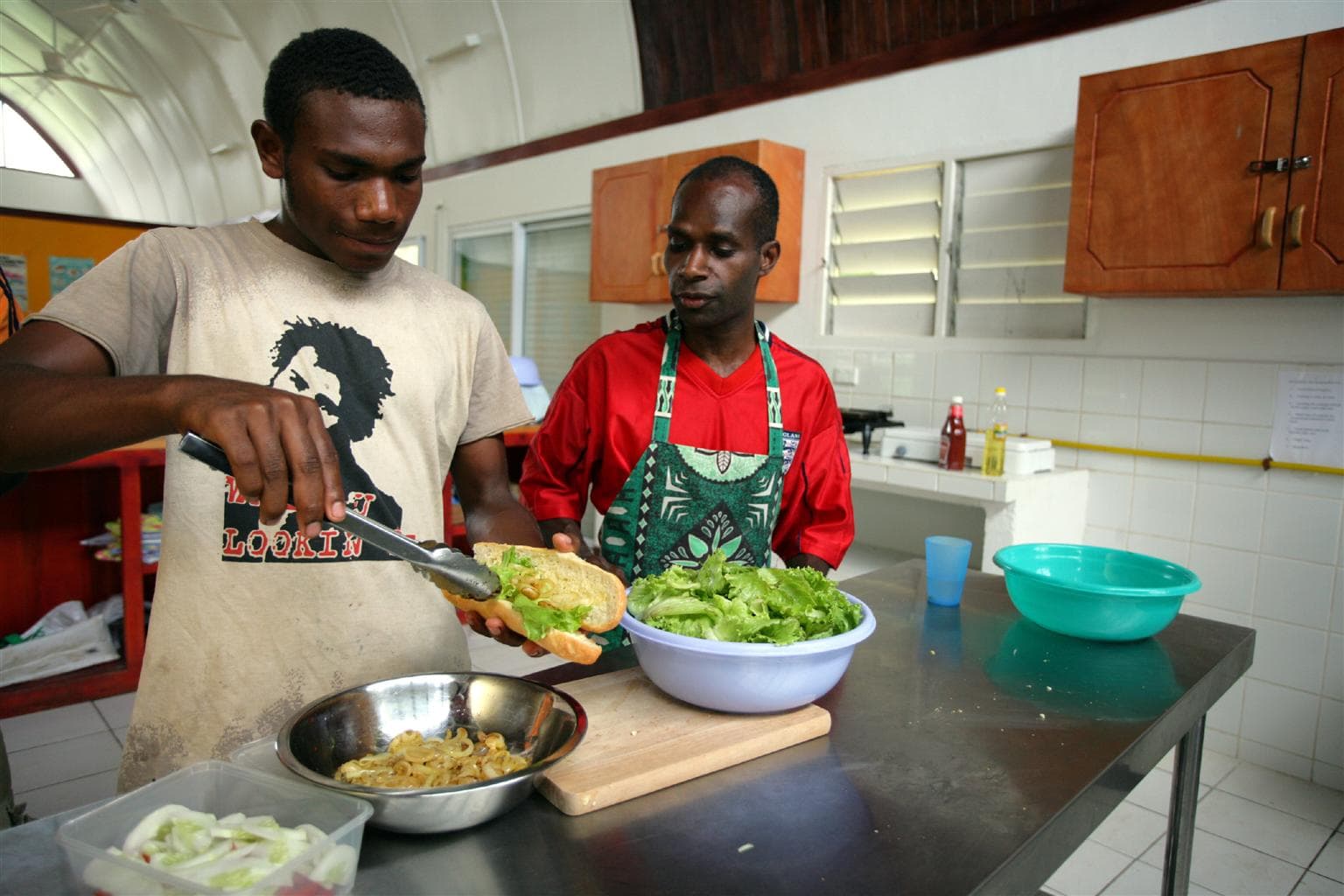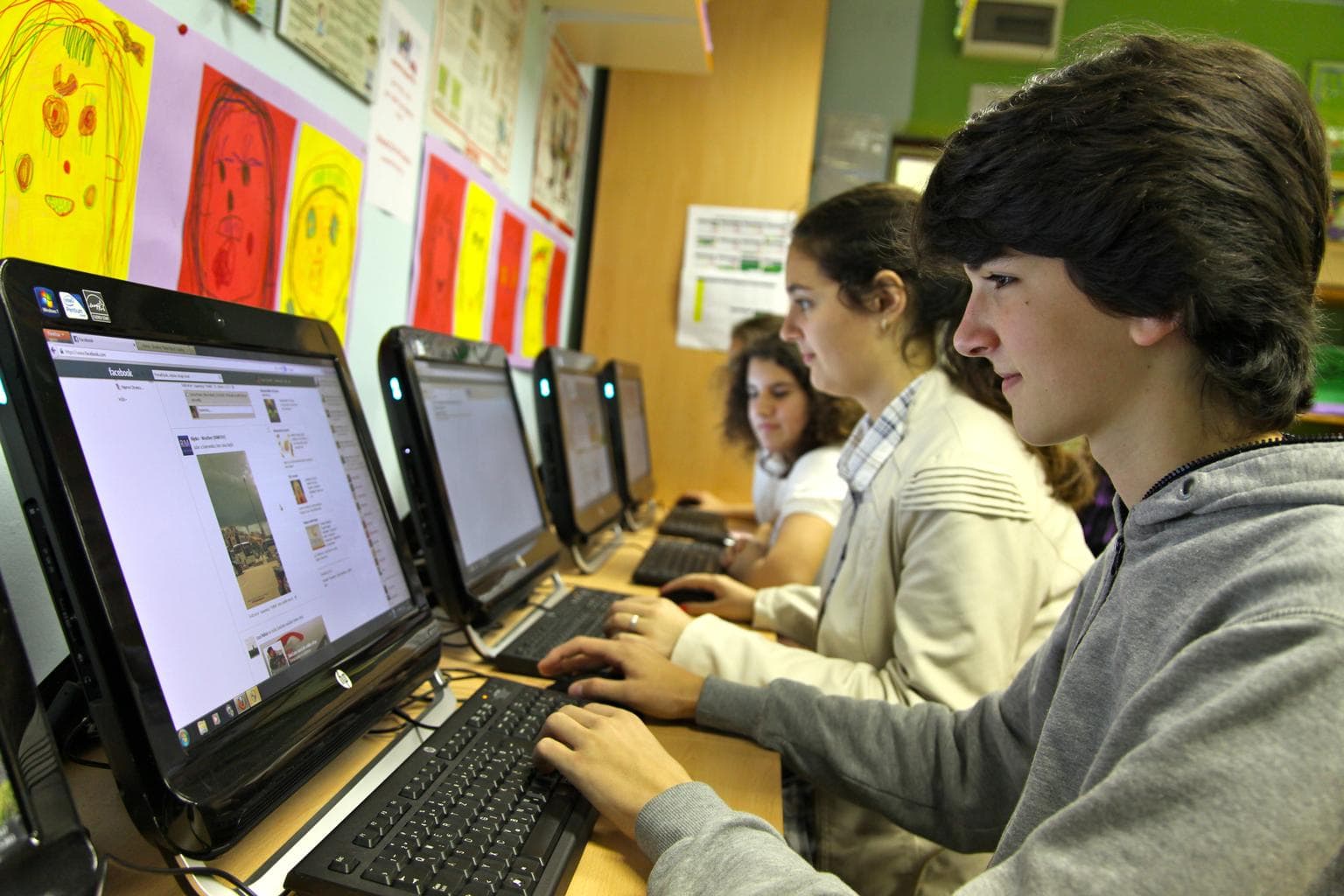Karim, 13, participates in a programme at a vocational training center in Fada, Burkina Faso, which offers pre-professional and professional training for displaced children. Karim chose to learn about solar energy. “My dream is to become an engineer,” he says.
Adolescence represents an opportunity to develop skills and knowledge that support a successful career
This potential can be hindered by spending excessive time on household chores or engaging in hazardous economic activities that compromise physical, social and educational development. How adolescents use their time, and whether they have the opportunity to acquire specialized skills, is key to a successful transition to work.
If an adolescent is not able to study or learn a skill, and must work to support themselves or their families, they should be gainfully employed
If an adolescent is not able to study or learn a skill, and must work to support themselves or their families, they should be gainfully employed
A legal working age adolescent who is not in education or training, and who is seeking work and not finding it, is considered unemployed. Adolescents should be able to focus on getting an education or learning a skill, with part-time employment on the side if they so desire.
There is generally little difference in adolescent unemployment rates between girls and boys within regions, with the exception of Latin America and the Caribbean and the Middle East and North Africa where unemployment rates are higher for adolescent girls than boys.
The COVID-19 pandemic has disrupted the labour market and led to job losses around the world. People who already faced disadvantage in the labour market – including youth – have been more likely to feel the impact of employment losses.
Gender differences in the NEET represent a threat to girls and their future
Gender differences in the NEET represent a threat to girls and their future
The NEET rate includes adolescents both inside and outside the labour force and can be read as a complement to the unemployment rate. The NEET rate is defined as the percentage of people in a particular age group who are neither in employment, education, or training and is an estimate of the number of adolescents underutilized in society.
In every region with data, there is a higher percentage of underutilized girls than boys. The most drastic difference is found in the South Asia region, where the NEET rate is 29 per cent for girls, and 10 per cent for boys.
What is represented in the NEET rate?
- Not in education or training: can be explained by expensive school fees, no schooling opportunities, and safety issues getting to and from school.
- Unemployed adolescents: can be explained by a job market with no opportunities for the skills and qualifications of adolescents.
- Adolescents outside of the labour force: can be explained by demotivation and dissatisfaction with the labour market and lack of education opportunities. Cultural and social norms also play a role. For instance, early marriage can prevent a girl from working and studying.
From a young age, adolescents are engaged in economic activity; for many, this crosses the threshold into child labour
From a young age, adolescents are engaged in economic activity; for many, this crosses the threshold into child labour
Adolescents are routinely engaged in paid and unpaid forms of work that are not harmful to them. However, those who work excessive hours or in hazardous conditions are unlikely to complete their education, severely limiting their ability to engage in productive economic opportunities in adulthood, and may face risks to their physical, mental or social development.
Fifteen per cent of adolescents aged 10–14 spend enough hours per week on economic activities that they would be classified as child labourers (a threshold that varies by the age of the child).
When are economic activities and unpaid household services considered child labour?
UNICEF does not oppose light work by adolescents, as long as it complies with the ILO Convention No.138:
- Adolescents under 11 years of age cannot engage in economic activities but can, at most, engage in 21 hours of household chores per week.
- Adolescents aged 12–14 can engage in a maximum of 14 hours of economic activity per week or 21 hours of household chores.
- Adolescents aged 15–17 can engage in 43 hours of economic activity per week at most. They cannot be classified as child labourers based on time spent on household chores.
Globally, adolescent girls spend more time than boys helping around the house
Globally, adolescent girls spend more time than boys helping around the house
On average, 16 per cent of adolescent girls aged 10–14 spend more than 21 hours per week on household chores, compared to 8 per cent boys of the same age. This imbalance by sex is present in all regions, with the largest gap in South Asia and the Middle East and North Africa, where girls are three times more likely to meet this threshold than boys.
Chores commonly undertaken by girls – such as preparing food, cleaning, and caring for others – set the stage for unequal burdens later in life, and limit girls’ outlook and potential while they are still young. Other household chores or economic activities can inadvertently place girls in situations of risk. For instance, girls may be vulnerable while traveling to or from their homes to carry water or collect firewood.
Low-income countries present a low level of basic ICT skill proficiency among youths and adults
Low-income countries present a low level of basic ICT skill proficiency among youths and adults
The demand for technological skills is high and low income countries are expected to create tens of millions of jobs for people with advanced digital skills in the future. Many of these jobs will go unfilled unless adolescents develop crucial ICT skills.
The Mass Media and ICT modules in MICS6 provide information on men’s and women’s use of ICT skills in nine activities ranging from copying or moving a folder to writing a computer program. Individuals are counted as having ICT skills if they performed at least one of the nine activities in the past three months.







